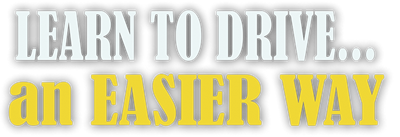You may also notice that some content may appear more than once in different categories. This is because not everyone will read this App from start to finish, but just select the subjects relevant to their needs.
Like with most things, there is an “Easy Way” to carry out a task, and a “Hard Way” to carry out the same task. The purpose of this book is to show you the Easy Way so that you reach driving independence more quickly and help to save money on paying for more driving lessons which could do by learning tasks the Hard Way.
ACCELERATOR
ACCELERATOR The accelerator is often referred to as the 'Gas' pedal by most driving instructors. This pedal gives you the power to increase speed. But it also is very much like a 'tap'. The more that you press it, the more fuel you draw from the fuel tank. So by using...
BAY PARKING
BAY PARKING Bay parking is useful not just for your driving test, but also for when you're driving independently and need to park at the shops, or anywhere else you may be. When asked to carry out the Bay Parking manoeuvre, consider adjusting your door mirrors...
BRAKES
BRAKES You have two types of brakes in your car. The Footbrake and the Handbrake (sometimes referred to as the Parking Brake). Both of these brakes has a role to play, so it's important you are familiar with both and know when you should use the different brakes. The...
FOOTBRAKE
FOOTBRAKE The Footbrake is one of the most important parts of your vehicle, so you should be comfortable using it and know when to use it. The footbrake is used for 3 things. * Slowing the car * Stopping the car * Giving you 'time'. Time to think, Time to assess and...
CLEARANCE
CLEARANCE When driving, you should always leave yourself enough clearance. What does this mean? There should be at least a door width when passing parked vehicles. If the door of a parked vehicle opens and you feel a need to swerve, wherever you swerve to, is where...
DRIVING LESSONS
DRIVING LESSONS Always regard the first 10 minutes of your driving lessons as: 'The Warm-Up'. The reason you should do this is because if something doesn't quite according to plan during the first 10 minutes of your driving lessons, it's all too easy to allow your...
OBSTRUCTIONS
OBSTRUCTIONS When you're driving and you come across obstructions in the road, it's important to give enough clearance when passing. For example, when some of my pupils approach parked cars for the very first time, they position the car so that it will be too close,...
CLEARANCE
CLEARANCE When approaching to pass parked vehicles always remember that they are actually creating blind spots. This is why you need to leave enough clearance. You should always be anticipating the possibilities of what the parked vehicle could do. This means...
DRIVING TEST
DRIVING TEST From 1st September 2003, 'Tell Me, Show Me' questions became part of the practical driving test. You will be asked a question on basic car maintenance and to explain to the Examiner how you would check. Details of these questions accompany this letter. I...
DRIVING TEST – HOW SHOULD I DRIVE ON MY TEST?
DRIVING TEST - HOW SHOULD I DRIVE ON MY TEST? Drive just as your driving instructor has taught you. Don't change anything. Don't drive like a 'Learner' driver'. If you drive like a Learner driver, you will stay a Learner driver. The examiner wants to see if you are...
…A really great book, from a driving instructor I would highly recommend.…
The book helps to outline manoeuvres and skills and enables you to carry one learning WITH EASE, even when your lesson has finished.
Get in touch
Feel free to get in touch via this website form or alternatively you can email me directly at:
info@learntodrivetheeayway.co.uk
or call me on:
